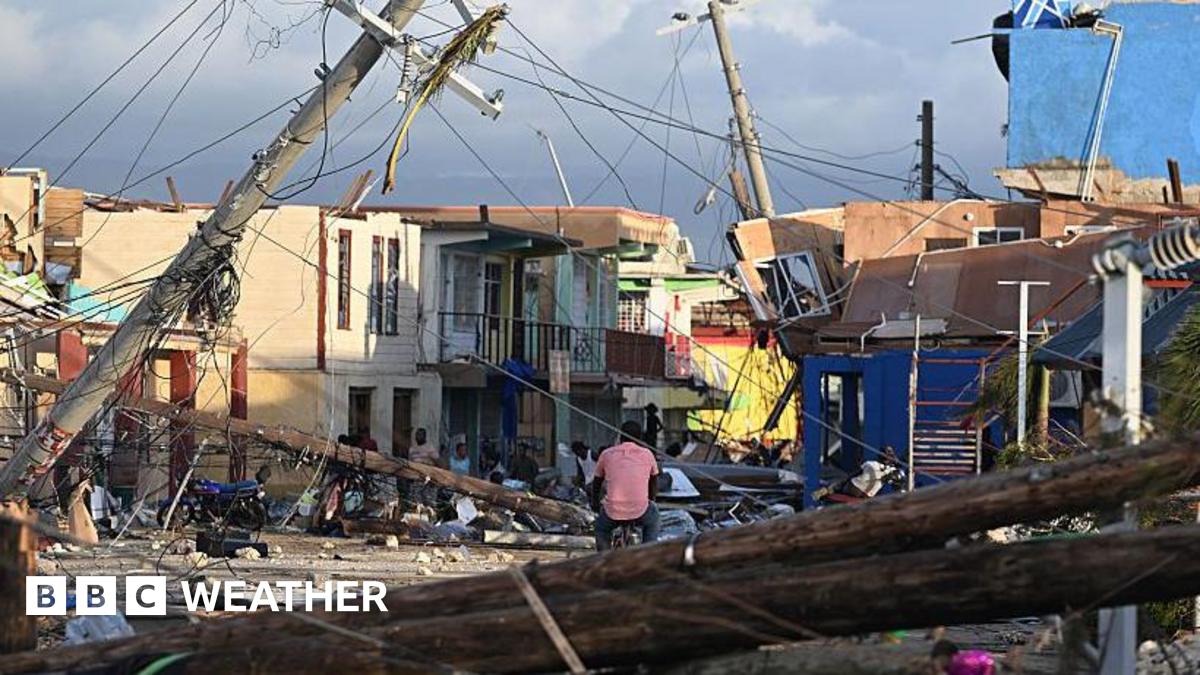The world’s water resources face growing pressure from climate change while emergencies involving the life-giving resource are increasingly impacting lives and livelihoods, the UN World Meteorological Organization (WMO) said on Thursday.
“Water-related hazards continue to cause major devastation this year,” said Celeste Saulo, WMO Secretary-General. “The latest examples are the devastating monsoon flooding in Pakistan, floods in South Sudan and the deadly flash floods in the Indonesian island of Bali. And unfortunately, we see no end to this trend.”
Ms. Saulo noted that these emergencies have been happening amid increasingly warm air temperatures, which allow more water to be held in the atmosphere leading to heavier rainfall.
Her comments coincided with the publication of a new WMO report on the state of the world’s waterways, snow and ice which notes that 2024 was the hottest in 175 years of observation, with the annual mean surface temperature reaching 1.55 °C above the pre-industrial baseline from 1850 to 1900.
Storm Boris legacy
Against this backdrop in September 2024, central and eastern Europe experienced devastating flash-floods caused by deadly Storm Boris which uprooted tens of thousands of people. Similar disasters are likely to happen more often, even though they should - in theory - be extremely rare.
In the Czech Republic, several rivers flooded in an extreme fashion “that actually statistically should only occur every 100 years,” said Stefan Uhlenbrook, WMO Director of Hydrology, Water and Cryosphere Division.
“A ‘century event’ happened…unfortunately, statistics show that these extreme events might become even more frequent.”
Himalayan deluge
Another example of the increasingly erratic behaviour of the world’s water cycle is the extremely heavy rainfall that has affected parts of Himachal Pradesh or Jammu and Kashmir.
“The region saw extremely heavy rainfall when it was not expected; the monsoon came early,” said Sulagna Mishra, WMO Scientific Officer. “So, this is what we are talking about as the unpredictability of the system is growing, more and more.”
Turning to the impact of last year’s pronounced El Niño weather phenomenon, WMO’s report indicates that it contributed to severe drought in the Amazon basin last year.
Equally, northwest Mexico and the northern part of North America saw below-average rainfall, as did southern and southeastern Africa.
“El Niño at the start of 2024 played a role,” explained Ms. Saulo, “but scientific evidence shows that our changing climate and rising temperatures lead to more extreme events, both droughts and floods.”
Our connected world
The WMO report’s other findings confirm wetter-than-normal conditions over central-western Africa, Lake Victoria in Africa, Kazakhstan and southern Russia, central Europe, Pakistan and northern India, southern Iran and north-eastern China in 2024.
One of the key messages of the UN agency report is that what happens to the water cycle in one part of the world has a direct bearing on another.
Melting glaciers continue to be a major concern for meteorologists because of the speed at which they are disappearing and their existential threat to communities downstream and in coastal areas.
“2024 was the third straight year with widespread glacial loss across all regions,” Ms. Saulo said. “Glaciers lost 450 gigatonnes, this is the equivalent of a huge block of ice seven kilometres in height, seven kilometres wide and seven kilometres deep, or 180 million Olympic swimming pools, enough to add about 1.2 millimetres to global sea level, increasing the risk of floods for hundreds of millions of people on the coasts.”
The report also highlights the critical need for improved data-sharing on streamflow, groundwater, soil moisture and water quality, which remain heavily under-monitored.
Where next?
Latest news
Read the latest news stories:
- Gender Equality: The Key to Peace, Prosperity, and Sustainability Thursday, September 18, 2025
- A Meeting of Over 150 World Leaders Under One Roof—& the Day UN Came Under a Terror Attack Thursday, September 18, 2025
- Nepal’s Gen Z protest: How Fake News Tried to Rewrite a Revolution Thursday, September 18, 2025
- Gaza City lifelines collapsing, UN aid agency warns Thursday, September 18, 2025
- GAZA LIVE: UN Security Council to vote on resolution demanding access to aid Thursday, September 18, 2025
- Fragile progress in Syria, at risk from exclusion and foreign interference, UN warns Thursday, September 18, 2025
- ‘No end’ expected to floods and storms as global heating continues Thursday, September 18, 2025
- UN presses ahead with mission for a better world despite global headwinds Thursday, September 18, 2025
- Loss and Damage at COP30: Indigenous Leaders Challenge Top-Down Finance Models Wednesday, September 17, 2025
- UN Independent Commission Finds That Israeli Forces Have Committed Genocide in Gaza Wednesday, September 17, 2025
Link to this page from your site/blog
Add the following HTML code to your page:
<p><a href="https://www.globalissues.org/news/2025/09/18/41061">‘No end’ expected to floods and storms as global heating continues</a>, <cite>Inter Press Service</cite>, Thursday, September 18, 2025 (posted by Global Issues)</p>… to produce this:
‘No end’ expected to floods and storms as global heating continues, Inter Press Service, Thursday, September 18, 2025 (posted by Global Issues)

 1 month ago
20
1 month ago
20










 English (US) ·
English (US) ·